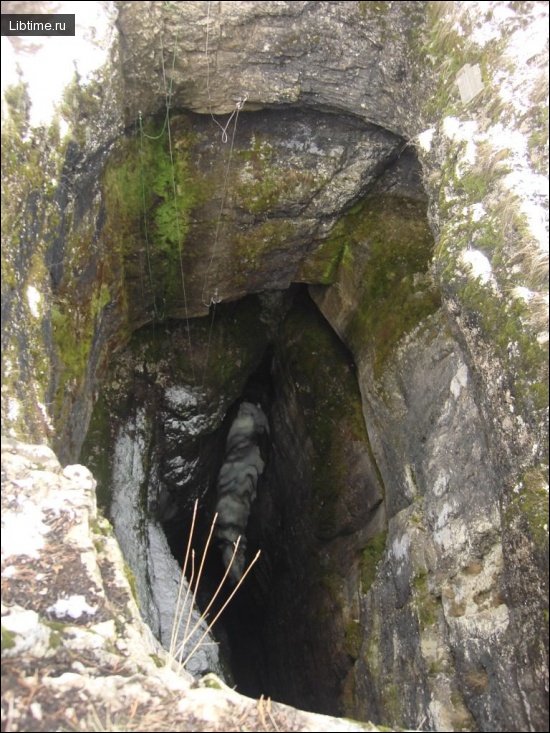Calcite dams
Calcite nodules are characterized by the phenomenon of luminescence, which is associated with the presence of activating impurities in them. Irradiated with a pulse lamp, the nodule formations glow yellow, soft green, azure-blue and blue light.
Sometimes they emit a dazzling white steady light that seems to stream from these fabulously beautiful forms. The brightest luminescence is in colomorphs with an admixture of manganese. 
Guras and cave oolites, composed mainly of tuff, differ somewhat from other nalic formations in structure, porosity and volumetric weight, which allows us to single them out into a special group.
However, this division is largely conditional. Calcite dams, or gurus, backing underground lakes, are quite widespread. In the Soviet Union, they are noted in 54 caves.
Guras are found mainly in limestone cavities and much less frequently in dolomite cavities. They are formed in horizontal and inclined passages as a result of calcium carbonate precipitation from the solution, which is associated with the release of carbon dioxide due to changes in the temperature of the water flow during its movement through the underground gallery.
The outlines of the dams, which usually have the form of a regular or curved arc, are determined mainly by the original shape of the protrusions of the cave floor.
The height of barrages varies from 0.05 to 7 m, and the length reaches 15 m, (the largest gur in the world found in the abyss Petit Saint-Cassien (France, Var) at a depth of 229 m. Its height is 13 m). According to morphological features, gurs are subdivided into area and linear ones.
The latter are developed mainly in narrow passages with underground streams, which they divide into separate water bodies of up to 1000 m2 and more. Water flow not only creates calcite dams, but also destroys them.
When flow rates and groundwater salinity change under the action of erosion and corrosion, holes, breaches and cuts are formed in the gurs. This leads to the formation of dry gurus unable to retain water. As a result of further dissolution and erosion, only highly corroded protrusions noted on the floor and walls of the cavity remain in place of the calcite weirs.
According to the thickness of the seasonal half-layer (0.1mm) V. N. Dublyansky determined the age of the gurs in the Red Cave. It turned out to be equal to about 9-10 thousand years. Calcite weirs are especially interesting in the Red, Shakuran and Kutuk IV caves.
In the far part of the Red Cave there are 36 calcite cascades from 2 to 7 m high and up to 13 m long in a length of 340 m. Their width sometimes reaches 6 m. In the gallery of the Big Gurus, located in the upper floor of the Kutukskaya IV cave and having a length of 102 m, the bed of the underground stream is blocked by 34 dams of milky-white calcite. Their height reaches 2 meters and length - 15 meters.
So-called sealed gurus (calcite chambers) were found here. The water bodies submerged by them are completely covered with calcite film. One of the passages of the Shakuran cave (Caucasus), the length of which reaches 400 m, is divided by calcite dams into 18 lakes 0.5 to 2 m deep.


